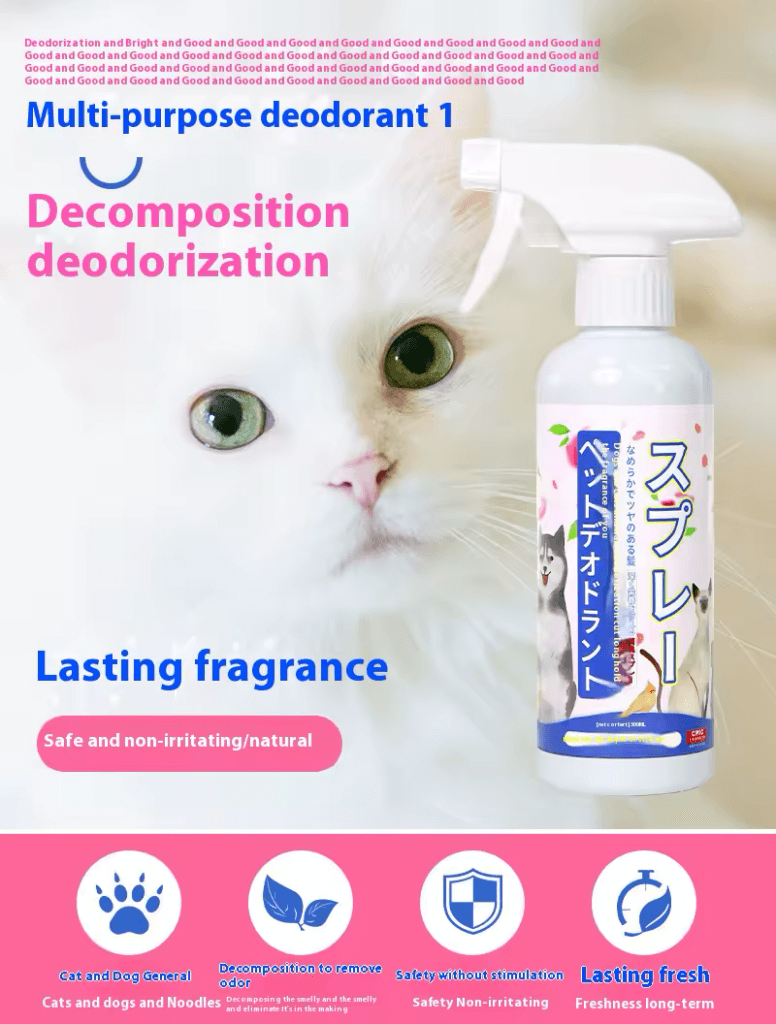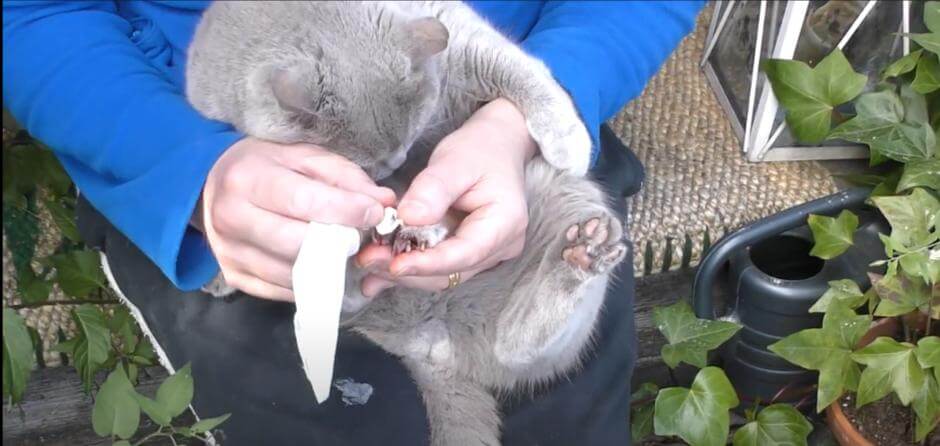I still remember the day my playful tabby, Whiskers, got a small cut on his paw after exploring the backyard. At first, I panicked, unsure of how to help him. If you have ever experienced a similar scare with your furry friend, you know that a bleeding paw can be very upsetting. In this article, we will discuss simple steps and helpful tips to stop a cat’s bleeding paw. Whether you are a seasoned pet owner or new to caring for a cat, this guide will give you clear, easy-to-follow advice so you can feel confident in handling a pet emergency.
When a cat injures its paw, the bleeding can be caused by a sharp object like broken glass, thorns, or even a minor scratch from rough play. Occasionally, a cat’s claws may accidentally cause a cut. It is important to remain calm when you notice your cat bleeding because your pet can sense your stress and may become frightened. Keeping a calm and gentle approach is the first step in helping your cat.
ALSO READ: Interesting stories
Before you begin, make sure you have a quiet space where you can work safely. Gather some basic supplies such as a clean towel, a pair of disposable gloves if available, some styptic powder (or alternatives like cornstarch or flour), a clean cloth, and a small container of warm water. You may also want to have a pair of tweezers on hand in case you need to remove any small debris from the wound. The key to stopping a cat’s bleeding paw is to act quickly and gently while keeping your pet calm and safe.

LEARN MORE ABOUT THIS PRODUCT!!!
The first thing you should do is try to calm your cat. Speak softly, and try to hold your pet gently in your lap or on a soft surface. You might want to wrap your cat in a towel to keep him from scratching or running away. Always be very gentle, as you would rather not cause any more stress or injury. Remember, the goal is to keep your cat as comfortable as possible during this time.
LEARN MORE: Read blogs and articles here!!!
Once your cat is calm, gently examine the paw to determine the severity of the cut or injury. Look for any visible debris like splinters or pieces of glass. If you see something stuck in the paw, do not try to pull it out immediately if it is deeply embedded; the situation may require professional attention. Instead, note its presence and avoid further manipulation until you can consult a veterinarian. Veterinary help should be sought immediately if the cut is deep, the bleeding is heavy, or the wound is not stopping. Minor injuries can be treated at home.
If the bleeding is light and the wound appears to be minor, the next step is to stop it. To achieve this, gently apply pressure to the injured area using a clean cloth or gauze pad. Hold the pressure steady for a few minutes. Often, continuous gentle pressure will allow the blood to clot and stop the flow of blood. It is important not to press too hard or for too long, as this might cause discomfort or further damage to the paw. Observe your cat’s response, and if it appears to be in pain, attempt to reduce the pressure slightly while ensuring sufficient force to aid in clotting the blood.
ALSO CHECK: Affordable products
After the bleeding has slowed down or stopped, you will need to clean the wound. Use a small amount of warm water to gently rinse the area. You can moisten a clean cloth or gauze with the water and carefully wipe away any dirt around the cut. Cleaning the wound helps prevent infections. Remember not to use too much water, as the paw is a sensitive area, and excess moisture might delay healing. If your cat is particularly sensitive, try to distract him with a treat or a soft voice, making the process as stress-free as possible.

LEARN MORE ABOUT THIS PRODUCT!!!
Once the wound is clean, you can use styptic powder if you have it available. Styptic powder is a common first-aid remedy that helps stop bleeding by causing the blood to clot more quickly. If you do not have styptic powder, you can use alternatives such as cornstarch or even flour. Gently dust a small amount of the powder over the cut. You may see the bleeding slow down almost immediately after applying the powder. If you do use any powder, make sure it is evenly applied and that your cat does not lick it off excessively, as the saliva could irritate the wound further.
Open a verified Fiverr account now!!!
If the bleeding persists despite your best efforts, here are a few additional steps to consider. First, try to reapply gentle pressure for a longer period—up to 10 minutes. If there is still bleeding, it may be necessary to wrap the paw loosely with a bandage. Use a soft bandage or even a clean piece of cloth, but be careful not to wrap it too tightly. The bandage should hold gentle pressure on the wound while allowing some circulation. Be sure to check the bandage regularly; if your cat becomes uncomfortable or if the bandage becomes wet or dirty, replace it immediately.
While treating your cat’s bleeding paw at home, it is important to monitor your pet for signs of infection. Look for symptoms such as redness, swelling, or discharge from the wound. If your cat starts to lick or chew the injured area excessively, this might indicate discomfort or the possibility of infection. In such cases, try to distract your pet with toys or treats, and consider using an Elizabethan collar (also known as a cone) to prevent further irritation of the wound. If you notice any of these signs or the bleeding resumes after stopping it, contact your vet immediately.
It is also helpful to know some do’s and don’ts during this process. Do keep your cat’s claws trimmed if possible, as long nails can sometimes worsen injuries or make it more difficult to apply first aid. Do ensure that your first aid supplies are easily accessible in case of emergencies. Do speak softly and use calming words to reassure your cat throughout the process. On the other hand, do not panic, as the procedure can increase your cat’s stress. Do not use human medications or ointments on your cat’s wound unless instructed by a veterinarian, as these can sometimes cause adverse reactions. And finally, do not delay seeking professional help if the bleeding does not stop or if the wound looks severe.

LEARN MORE ABOUT THIS PRODUCT!!!
Taking care of your cat during an emergency can be a learning experience. Even if you have successfully treated a minor injury at home before, every situation is unique. Never ignore your instincts—if something feels wrong or you’re unsure of the injury’s severity, call your vet. Veterinary professionals can sometimes recommend specific treatments or medications to help with pain management and healing, which might not be available over the counter.
Start Trading Your Crypto with Bybit Now!!!
Another point to keep in mind is the overall environment in which your cat lives. Never ignore your instincts—if something feels wrong or you’re unsure of the injury’s severity, call your vet, or rough terrain that could injure your cat. Creating a safe space for your pet to play can help minimize the risk of injury and ensure that your cat remains healthy and happy.
In addition, maintaining your cat’s overall health is essential. A balanced diet and regular exercise contribute to faster healing and a stronger immune system. When your cat is in excellent health, even minor injuries are less likely to develop into serious issues. Make sure to schedule regular check-ups with your veterinarian to keep up with vaccinations, dental care, and any other necessary treatments. This proactive approach can prevent many health problems before they become emergencies.
Understanding the common causes of a cat’s bleeding paw can also help you take preventive measures. Outdoor cats might encounter thorns, sharp rocks, or even other animals during their adventures. Indoor cats can still sustain injuries from accidents with furniture, broken toys, or even misbehaving household items. By keeping a close eye on your cat’s environment and behavior, you can often catch potential hazards early and make adjustments to prevent injuries.
For many pet owners, handling a bleeding paw can be a nerve-wracking experience. It is natural to feel worried when you see your beloved pet hurt. However, by following the simple steps outlined above, you can help stop the bleeding quickly and effectively. Remember that a calm and gentle approach is your best tool. When your cat sees you in control, they relax, making the process easier for both of you.

LEARN MORE ABOUT THIS PRODUCT!!!
Even if the injury seems minor, it is always a beneficial idea to document what happened. Keep a record of the incident, including the time, how the injury occurred, and the steps you took to treat it. This information can be useful if you need to consult a veterinarian later, especially if the wound does not heal as expected. It can also help you notice patterns—if your cat has frequent injuries, there might be a recurring hazard that you need to address.
Sometimes, despite your best efforts, a cat’s bleeding paw might not stop as quickly as you hope. In these situations, knowing when to seek professional help is crucial. If the bleeding continues beyond 10-15 minutes of applying pressure, or if your cat appears to be in significant pain, contact your veterinarian immediately. Additionally, if the wound looks deep, is accompanied by severe swelling, or if your cat is showing signs of shock (such as lethargy, rapid breathing, or pale gums), it is essential to get your pet to a vet right away.
Here is a quick checklist of the steps to take when you notice your cat’s paw is bleeding:
• Calm your cat and create a quiet environment.
• Gently examine the wound for any visible debris or foreign objects.
• Apply gentle pressure with a clean cloth or gauze for several minutes.
• Clean the wound with warm water using a soft cloth.
• Apply styptic powder, cornstarch, or flour to help the blood clot.
• If necessary, loosely wrap the paw with a bandage.
• Monitor the wound for signs of infection or continued bleeding.
• Contact a veterinarian if the bleeding persists or if the wound appears severe.
By keeping this checklist handy, you can quickly assess and respond to a bleeding injury without feeling overwhelmed. Taking action promptly can make all the difference in preventing complications and ensuring that your cat recovers smoothly.
In summary, a bleeding paw in a cat can be a frightening sight, but it is often manageable with calm, careful first aid. Remember to keep your cat calm, gently examine the injury, and use pressure and appropriate powders to stop the bleeding. Never ignore the wound for signs of infection and contact a vet if it doesn’t improve or if you’re unsure of its severity. Your preparedness and calm demeanour can help stop the bleeding and reassure your pet during a stressful time.
What steps have you taken before during a pet emergency? Have you ever had to treat your cat’s bleeding paw? Sharing your experiences can help other pet owners learn and feel more confident when similar situations arise. You are welcome to leave a comment below and share your story, questions, or any additional tips you’ve learnt along the way.
Recommended Broker for Forex Traders!!!

